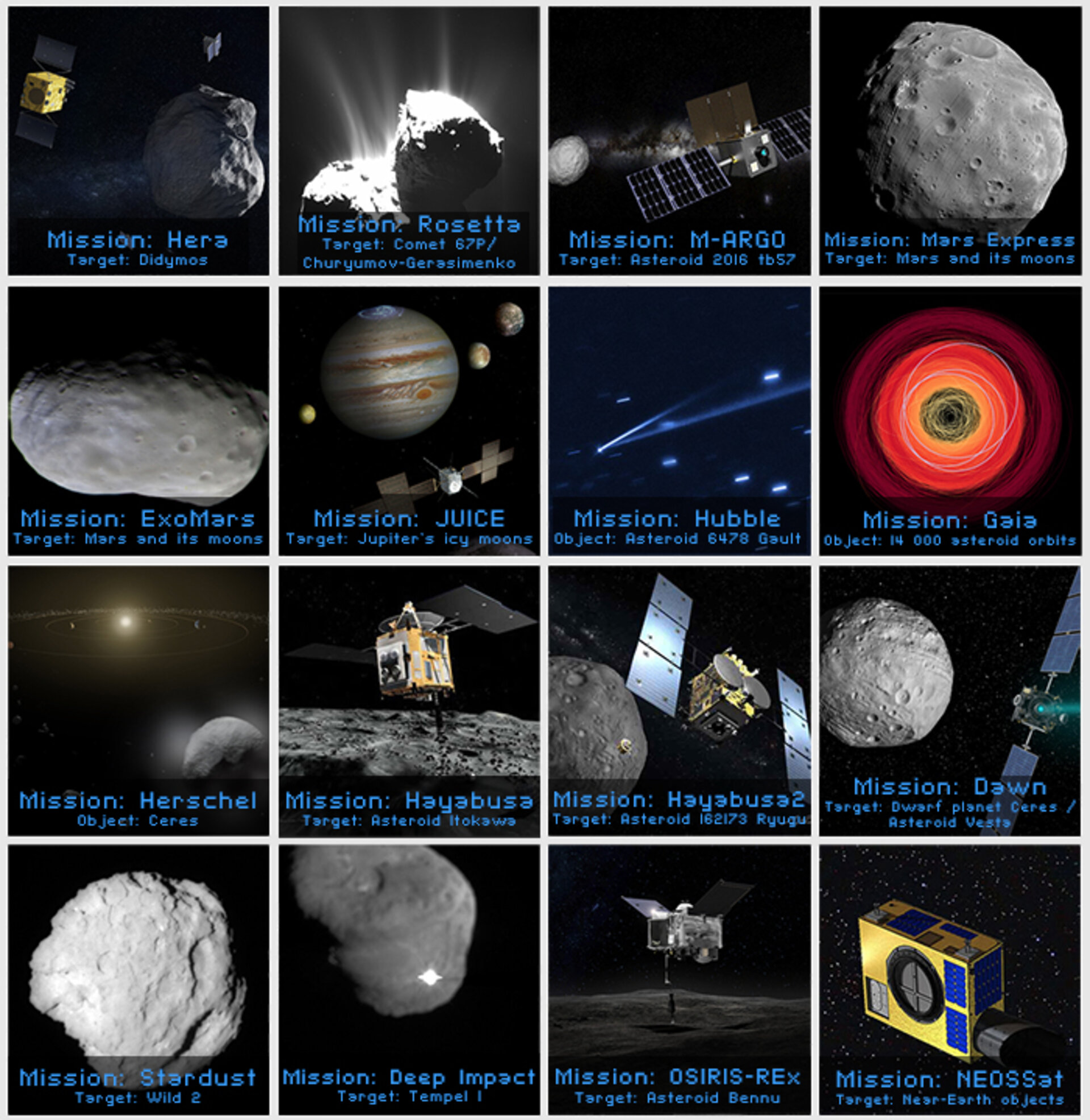Featured
- Get link
- X
- Other Apps
Exploration of Moons, Asteroids, and Comets
The exploration of moons, asteroids, and comets is a captivating field of study within the realm of planetary science. These celestial bodies provide valuable insights into the early solar system, the formation of planets, and the potential for life beyond Earth. Through dedicated missions and scientific investigations, researchers have been able to gather data about their compositions, structures, and dynamics, enhancing our understanding of the broader cosmic landscape.
1. Moons of Planets:
1.1. Earth's Moon: The Moon, Earth's only natural satellite, has been a subject of exploration for centuries. Human missions, such as the Apollo program, have brought back lunar samples that shed light on the Moon's geological history and provide clues about the early Earth-Moon system. Orbital missions, like the Lunar Reconnaissance Orbiter, have extensively mapped the lunar surface, enabling scientists to study its geology, mineralogy, and potential resources.
1.2. Jovian Moons: The moons of Jupiter, including Europa, Ganymede, Callisto, and Io, have been the focus of intense scientific interest. These moons exhibit diverse features, such as icy crusts, subsurface oceans, volcanic activity, and magnetic interactions with Jupiter. Missions like NASA's Galileo and the upcoming European Space Agency's JUICE mission aim to study the composition, geology, and potential habitability of these fascinating worlds.
1.3. Saturnian Moons: Saturn's moons, particularly Enceladus and Titan, have captured the attention of scientists. Enceladus exhibits geysers erupting from its south pole, which contain water vapor and organic molecules, suggesting the possibility of a subsurface ocean and potential for life. Titan, with its thick nitrogen-rich atmosphere and hydrocarbon lakes, resembles an early Earth-like environment. The Cassini mission provided valuable data on these moons, and future missions may further explore their potential for habitability.
2. Asteroids:
2.1. Near-Earth Asteroids (NEAs): NEAs are asteroids that have orbits that bring them relatively close to Earth's orbit. They provide opportunities for scientific exploration, as well as pose potential impact risks. Missions like NASA's OSIRIS-REx and Japan's Hayabusa2 have successfully rendezvoused with NEAs, collected samples, and returned them to Earth. By studying these samples, scientists gain insights into the early solar system's composition and the role of asteroids in delivering water and organic molecules to Earth.
2.2. Main Belt Asteroids: Main belt asteroids reside in the region between Mars and Jupiter, where thousands of them orbit the Sun. Space missions, such as NASA's Dawn mission, have visited main belt asteroids like Vesta and Ceres. Vesta, a rocky protoplanet, offers clues about the early stages of planetary formation, while Ceres, a dwarf planet, holds the distinction of being the largest object in the asteroid belt and harbors water ice in its subsurface.
3. Comets:
3.1. Oort Cloud and Kuiper Belt Comets: Comets are icy bodies that originate from two main regions: the Oort Cloud and the Kuiper Belt. The Oort Cloud is a vast, spherical shell of icy objects surrounding the solar system, while the Kuiper Belt is a disk-like region beyond Neptune's orbit. Missions like the European Space Agency's Rosetta and NASA's Deep Impact have studied comets up close. Rosetta successfully orbited comet 67P/Churyumov-Gerasimenko and deployed a lander named Philae, providing valuable data on the comet's composition and structure.
3.2. Impact on Understanding Solar System Evolution: Comets are considered time capsules that preserve the volatile materials from the early solar system. By analyzing their compositions, scientists can gain insights into the conditions and processes that shaped the solar system's formation. Cometary missions provide data on volatile elements and organic compounds, shedding light on the origins of water and the building blocks of life.
4. Scientific Goals and Techniques:
4.1. Sample Return Missions: Sample return missions, like NASA's OSIRIS-REx and Japan's Hayabusa2, play a crucial role in exploring these celestial bodies. By collecting samples and bringing them back to Earth, scientists can conduct detailed analyses in laboratories, providing a more comprehensive understanding of their compositions and histories.
4.2. Flyby, Orbital, and Lander Missions: Spacecraft are sent on flyby, orbital, or landing missions to study these bodies up close. Flyby missions provide valuable data during brief encounters, while orbital missions allow for detailed mapping and long-term observations. Lander missions provide on-the-ground data and allow for the deployment of instruments directly onto the surface.
4.3. Remote Sensing Techniques: Remote sensing plays a significant role in exploring moons, asteroids, and comets. Instruments aboard spacecraft capture data in various wavelengths of light, such as visible, infrared, and radar, to study surface features, compositions, and atmospheric characteristics. Remote sensing techniques allow scientists to gather information from a distance and build comprehensive maps and models of these celestial bodies.
5. Future Exploration:
5.1. Artemis Program: NASA's Artemis program aims to return humans to the lunar surface, allowing for more extensive exploration and scientific research. These missions will not only build on the knowledge gained from previous Apollo missions but also enable scientists to conduct detailed investigations, collect new samples, and establish a sustained presence on the Moon.
5.2. Asteroid Redirect Mission: NASA has proposed an Asteroid Redirect Mission, which involves capturing a small asteroid or a boulder from a larger asteroid and redirecting it into a stable orbit around the Moon. This mission aims to facilitate human exploration, test new technologies, and provide opportunities for scientific research.
5.3. Comet Exploration: Future missions may focus on exploring more comets to gather additional data and samples. These missions could involve landing on cometary surfaces, deploying advanced instruments, and studying their dynamic behavior as they approach the Sun.
Exploring moons, asteroids, and comets expands our knowledge of the solar system's formation, evolution, and potential for life. Through sample return missions, flybys, orbiters, and landers, scientists continue to unlock the secrets of these intriguing celestial bodies. The data and insights gained from these explorations contribute to our understanding of the broader cosmic landscape and inform future space missions aimed at unraveling the mysteries of the universe.
- Get link
- X
- Other Apps

Comments
Post a Comment